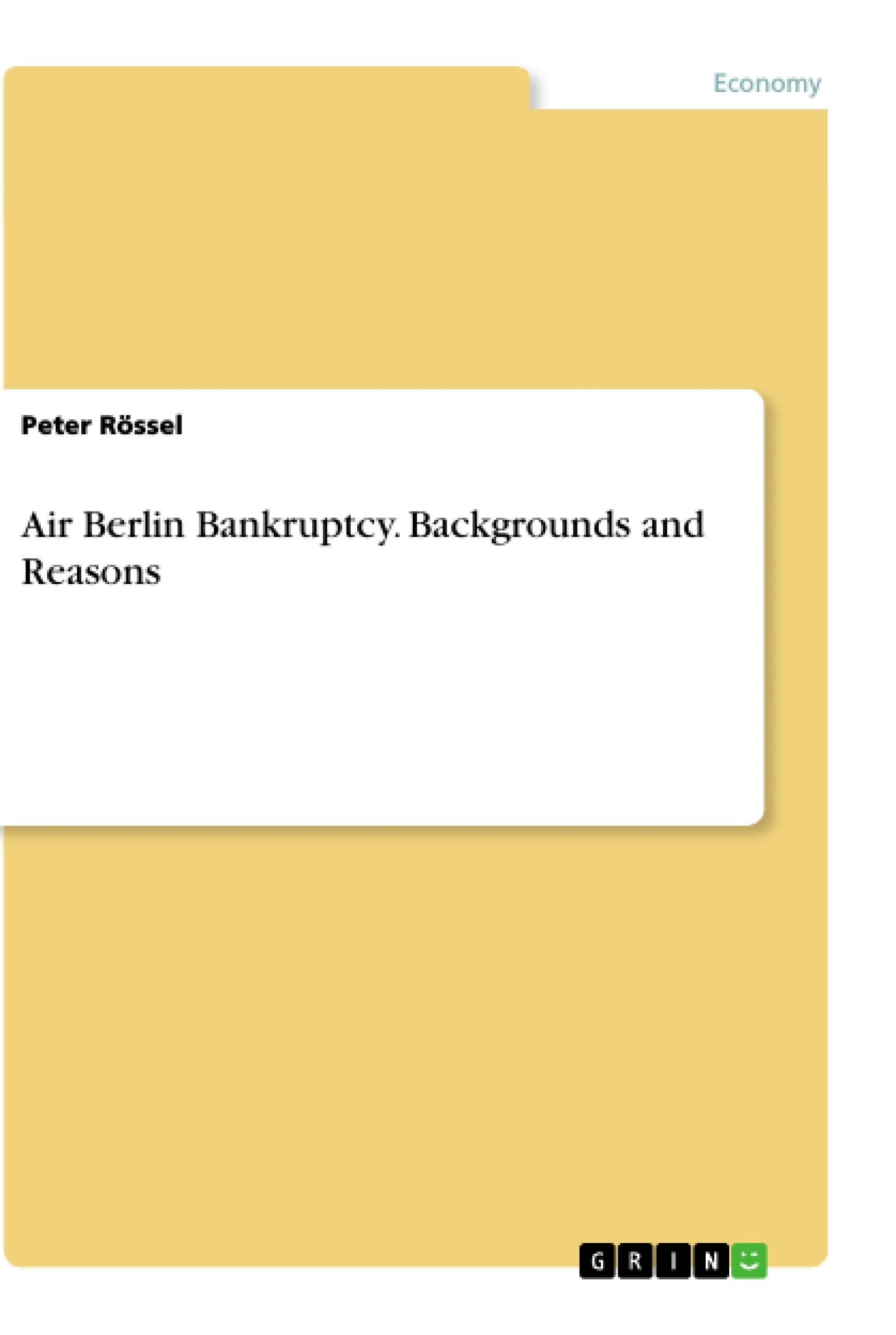This paper tries to outline the reasons why AirBerlin went into bankruptcy. The reasons are being presented from a financial perspective, presenting the necessary financial data that resulted in the financial loss of the firm, as well as the economic perspective that led to this disaster. Furthermore, troubles in the whole airline industries of recent decades are being highlighted through out the paper.
The Air Berlin PLC & Co. Luftverkehrs KG i.I, with seat in Berlin and basis on the airport Berlin Tegel was a German airline. It was a wholly owned subsidiary of the listed Air Berlin PLC, whose largest single shareholder was the Emirati Etihad Airways. On 15 August 2017, Air Berlin requested the opening of insolvency proceedings, the self-economic operation was continued with the help of a federal guarantee until 27 of October 2017. Parts of the company, including the business at Tegel Airport and its subsidiary LGW, were sold to Lufthansa and easyJet. The last airline of Air Berlin, Belair, filed for bankruptcy in mid-August 2018. In order to work out the causes for this bankruptcy, I will also give some more insight on the history of the company.
Inhaltsverzeichnis (Table of Contents)
- Introduction
- Background information Air Berlin
- IPO and first signs of financial issues
- Further financial troubles and Bankruptcy
- Reasons for the Bankruptcy
- Why is the airline industry so troublesome
- Conclusion
Zielsetzung und Themenschwerpunkte (Objectives and Key Themes)
This paper investigates the recurring trend of bankruptcy in the airline industry, particularly focusing on the recent case of Air Berlin. It aims to identify the causes behind Air Berlin's financial downfall and explore potential solutions to prevent similar situations in the future.
- The financial struggles and eventual bankruptcy of Air Berlin
- Factors contributing to the airline industry's financial instability
- Potential solutions to mitigate future airline bankruptcies
- The impact of low-cost airlines on the industry
- The role of external factors, such as terrorism and economic downturns, in airline financial difficulties
Zusammenfassung der Kapitel (Chapter Summaries)
- Introduction: Introduces the topic of airline bankruptcies, particularly in Europe, highlighting the recent cases of Air Berlin and Alitalia. It outlines the paper's objective to analyze the causes of Air Berlin's bankruptcy and explore possible solutions.
- Background information Air Berlin: Provides a brief history of Air Berlin, from its founding in 1978 as a charter airline to its eventual bankruptcy in 2017. This section details the company's growth, acquisitions, and its relationship with Etihad Airways.
- IPO and first signs of financial issues: Examines Air Berlin's initial public offering (IPO) in 2006 and discusses the early signs of financial difficulties that emerged in the years that followed. The section includes information about management changes, job cuts, and route adjustments.
Schlüsselwörter (Keywords)
This preview focuses on the keywords: airline bankruptcy, Air Berlin, financial instability, low-cost airlines, financial challenges, industry trends, and potential solutions. The paper aims to provide an in-depth analysis of the factors contributing to Air Berlin's bankruptcy and the broader challenges faced by the airline industry.
- Quote paper
- Peter Rössel (Author), 2018, Air Berlin Bankruptcy. Backgrounds and Reasons, Munich, GRIN Verlag, https://www.grin.com/document/456225




